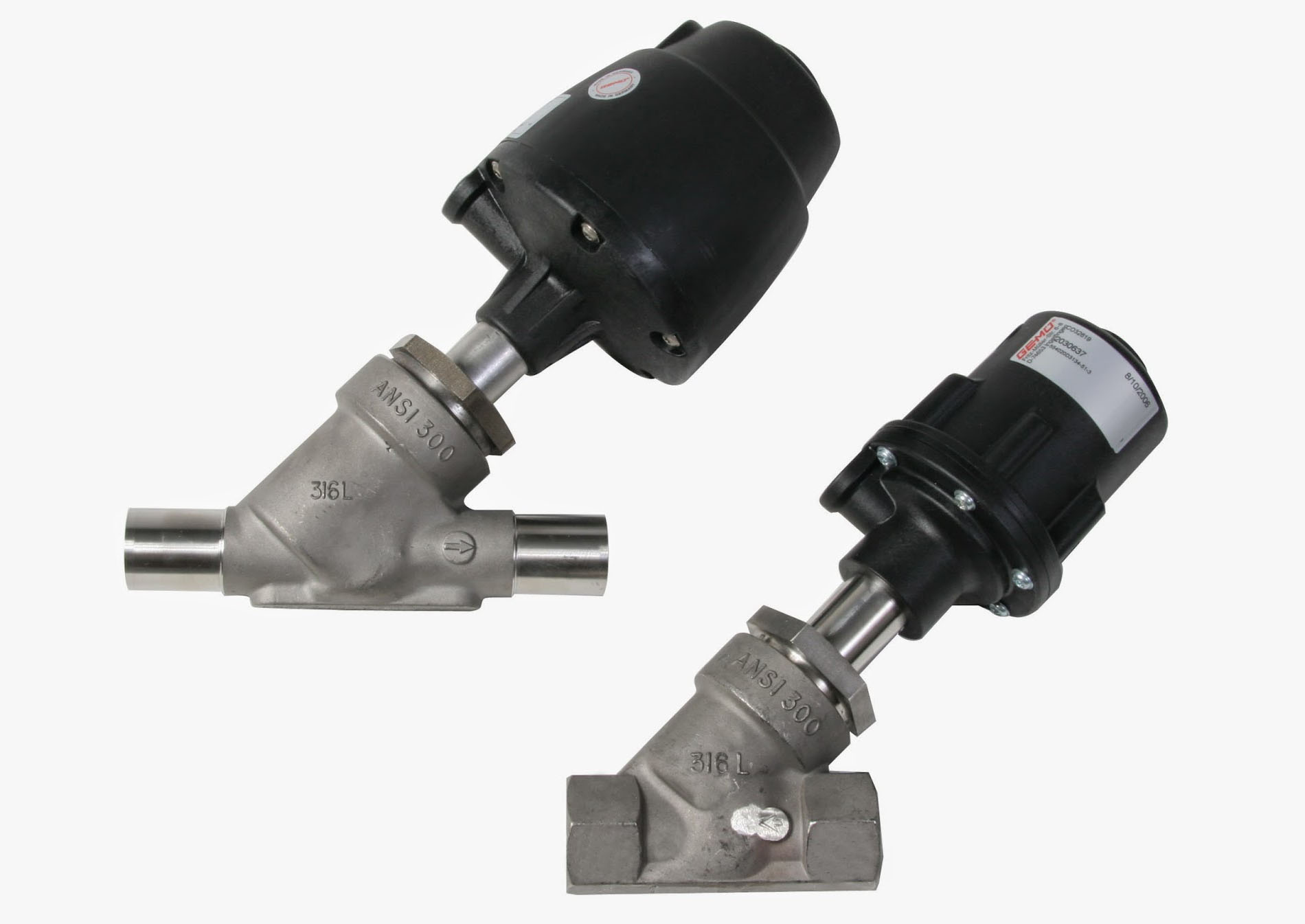- Contact Us
- Call Us
- Menu

“Angle valves” or “angle seat valves” are a family of on-off and control valves that have utilize a “Y” pattern body style, and a linear action to raise the disk from the seat to open and close the valve. By positioning the seat on an angle, the piston is pulled out of the flow path clearing the way for maximum flow. Angle valve provides tight shutoff, high cycle rate capability and very long service life.
Here are other design features that make an angle valve a top performer:
Angle valves are piloted by air and usually accompanied by a three way solenoid valve to operate the valve. The supply air pressure from the solenoid pilot valve charges the angle valve actuator to provide linear movement to the valve piston. Double acting angle seat valves have no spring and require on the solenoid to charge he opposing side of the actuator for movement in the opposite direction. Spring return angle valves use an enclosed spring in the actuator housing as the power to return the valve to its resting state.
Angle valves normally include a position indicator, such as a red or yellow visual beacon located in the head (or dome) of the valve.
Angle valves are designed to provide millions of continuous cycles in demanding applications such as water, steam, and difficult media. Designed to handle working pressures above 500 psi and temperatures to around 400 deg. F. The valve body materials are brass or 316 stainless steel, with process-facing materials being 316 ss or CF3M. Valve end connections can be tri-clamp (sanitary), NPT, ANSI flanges, socket weld, butt weld, or tube ends. Angle valves are available in normally open (NO) and normally closed (NC) positions and are bi-directional. They can be easily converted from NC to NO and double acting to spring return. The actuators come with threaded/ NAMUR ports for connection of the pilot valve. They can be used in extremely fast acting applications up to 1000 cycles per hour with expected life of over 10 million cycles.